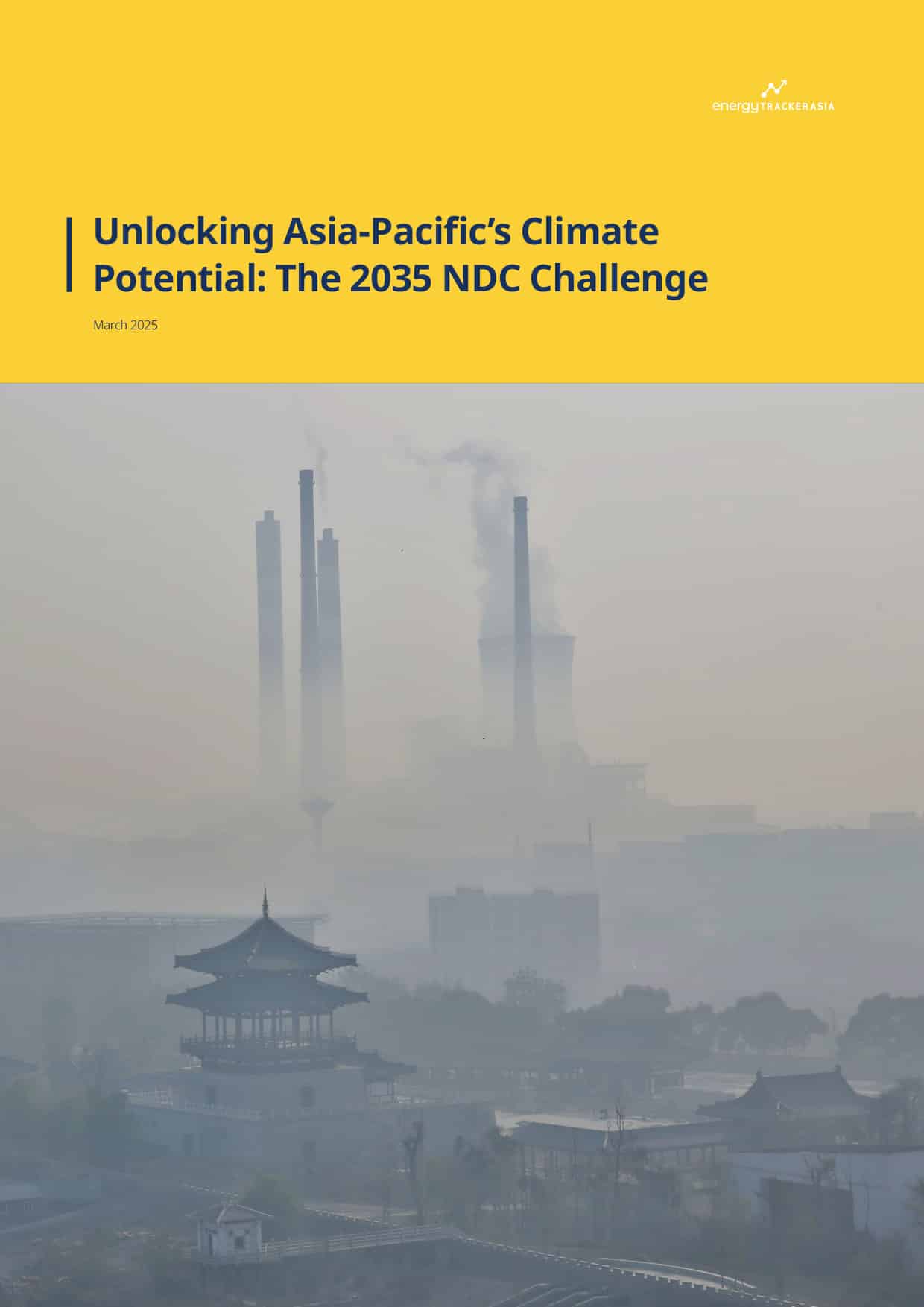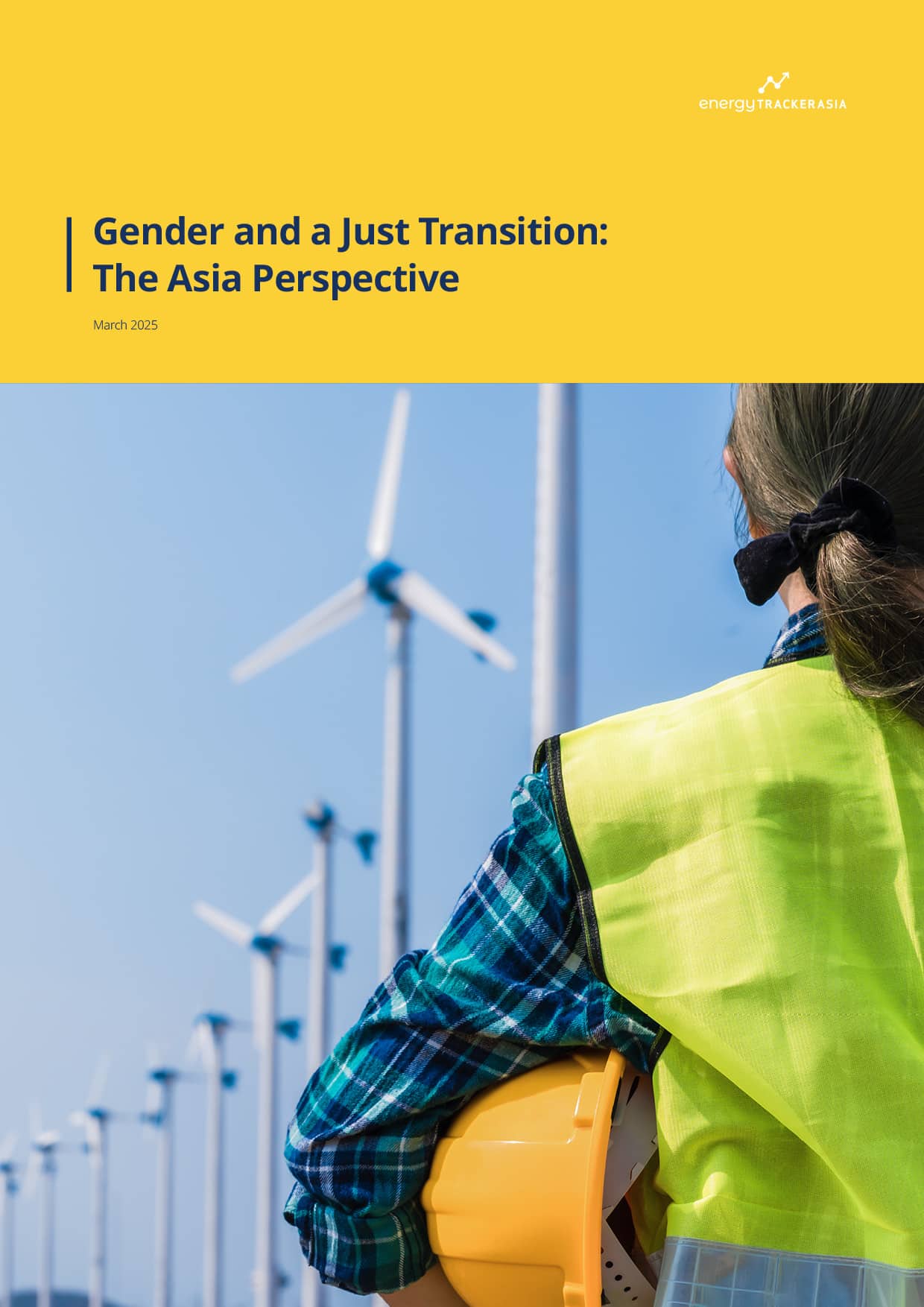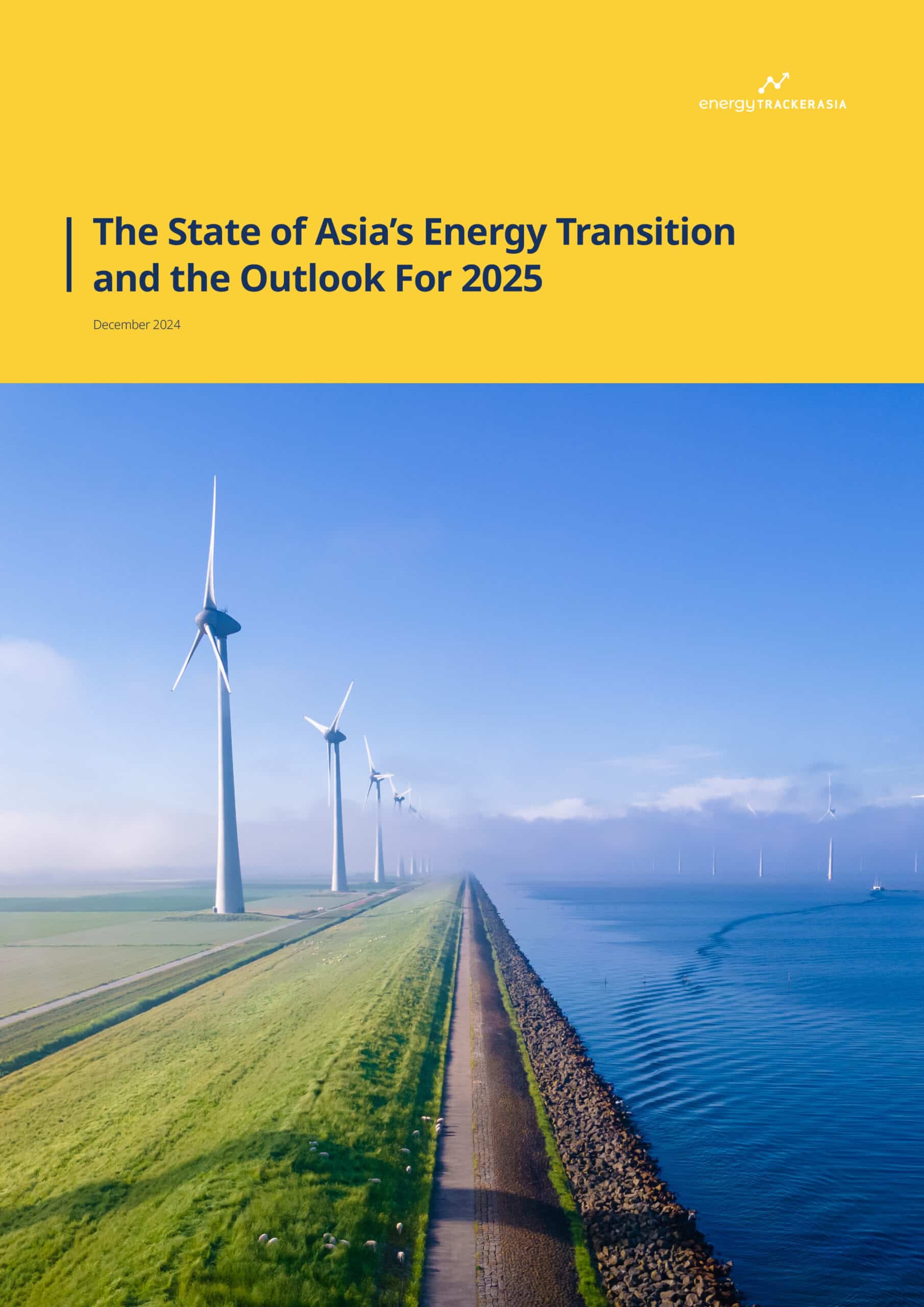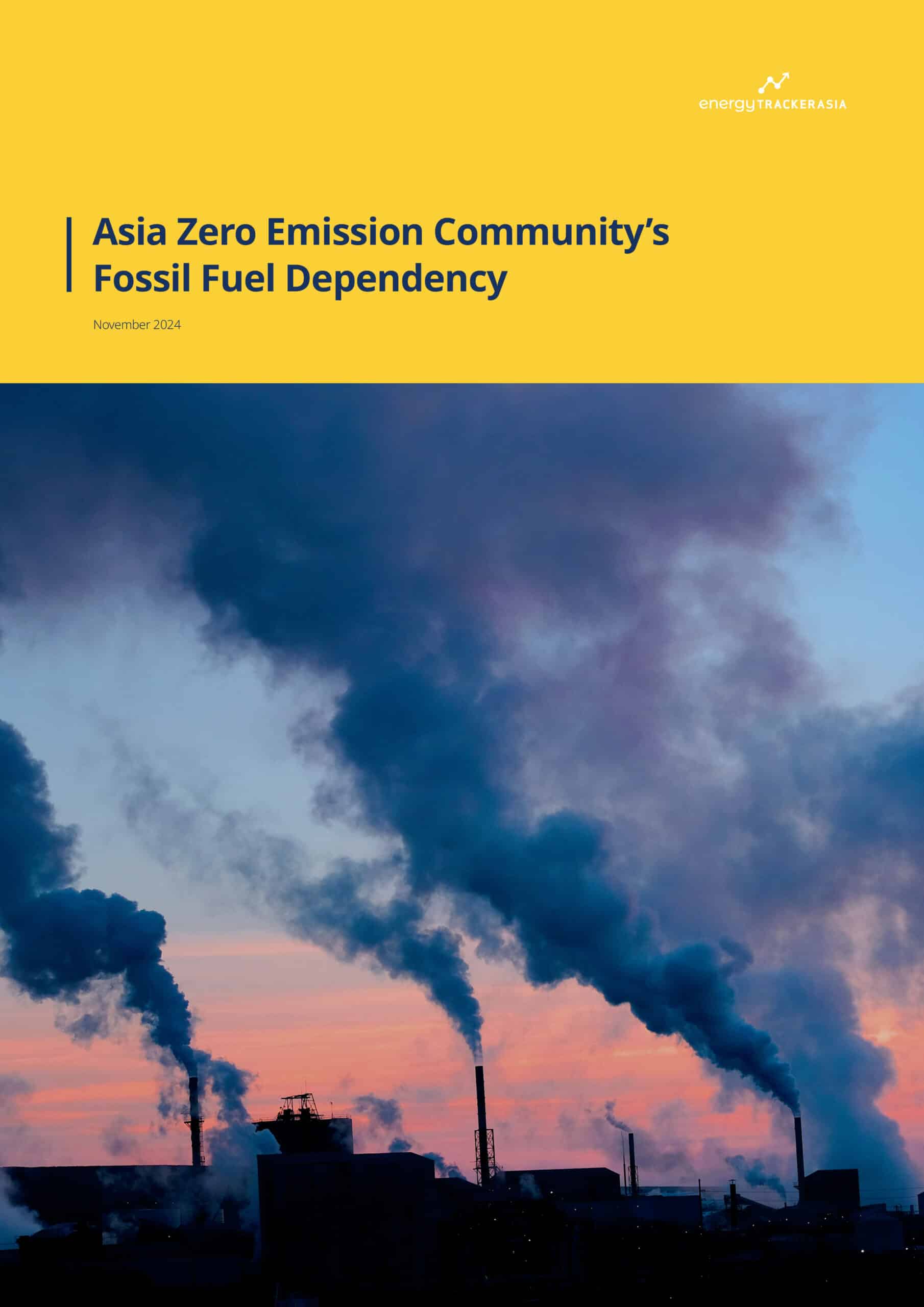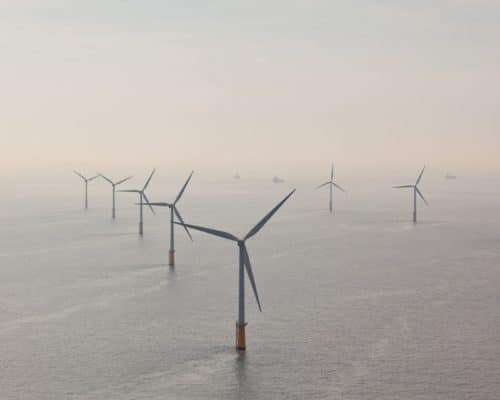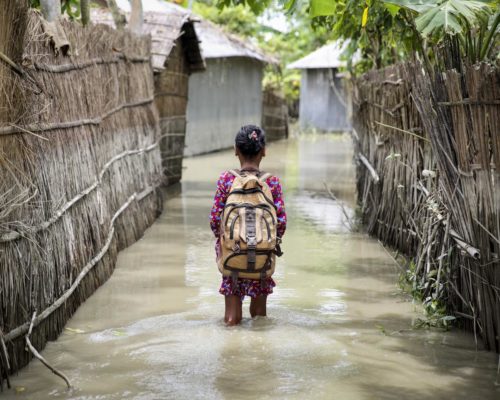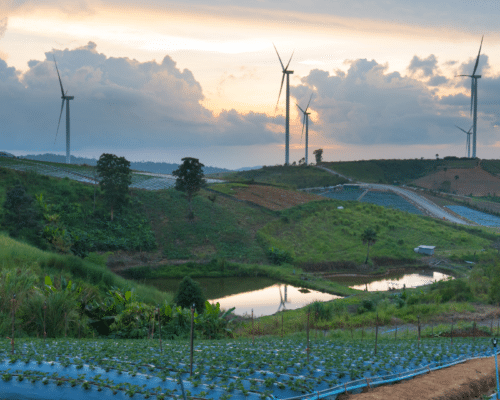Indonesia’s National Energy Plan (RUKN) Is Ambitious But Falls Short of Full Potential: CREA
24 February 2025 – by Viktor Tachev
Released in November 2024, Indonesia’s National Electricity Plan 2024-2060, or Rencana Umum Ketenagalistrikan Nasional (RUKN), builds upon the country’s COP29 pledge to phase out fossil fuel power and deploy 75 GW of renewable energy by 2040. As per the plan, Indonesia will deploy 75.6 GW of renewables by 2035 while pushing some ambitious targets forward to achieve net zero by 2060. The RUKN, covering projections up to 2060, aims to align the electricity supply and demand strategy with its 8% economic growth target from 2027 and beyond to make Indonesia a developed country by 2045. However, new research by the Centre for Research on Energy and Clean Air (CREA) reveals that the current prospective clean energy projects could put the country on track to achieve and even surpass the RUKN’s 2030 RE capacity target.
Clean Energy Targets Should Increase, CREA Says
In a dedicated study, CREA’s analysts Katherine Hasan and Lauri Myllyvirta find that the clean energy targets in the RUKN need to be substantially increased if Indonesia is to hit President Prabowo Subianto’s goal of phasing out fossil fuel power and adding 75 GW of renewables by 2040.
The pipeline of announced renewable energy and nuclear power projects, as well as those in construction and pre-construction phases in the country, totals 45 GW. The researchers note that bringing them to life would quadruple the country’s new energy capacity, putting it on track to hit the 75 GW renewable energy capacity addition target well ahead of schedule. Furthermore, CREA’s experts find that by fast-tracking the prospective 45 GW clean energy project pipeline, Indonesia can surpass the RUKN’s 2030 RE capacity target of 38.4 GW. Doing so would also help phase out fossil fuels by 2040.
However, the analysts warn that 13.6 GW of the prospective renewable energy and nuclear power projects still lack a designated start year. Of these, 10.7 GW are solar, 1.8 GW are wind and 1.1 GW are geothermal projects. At the same time, fast-tracking the 30.6 GW of prospective projects with designated start years can help Indonesia reach 58% of the 2035 capacity target in the RUKN.
Furthermore, the analysis concludes that the RUKN’s base scenario reveals low ambition for solar capacity, hitting just 40% of the set in both the JETP CIPP for on-grid integration by 2050 and in the IPCC AR6 for a fossil-free 2060. The case for wind power is similar, with the target capacity in the RUKN following solar in the IPCC AR6’s scenario. As a result, Indonesia risks missing out on capitalising on its huge wind power potential, estimated at 155 GW, including 61 GW onshore and 94 GW offshore prospective capacity.
CREA’s analysis also stresses that solar power offers the best opportunity to achieve the 75 GW target ahead of schedule. With at least 16.5 GW of prospective solar power projects in Indonesia, the potential exceeds the RUKN 2030 target of 12.8 GW by over 30%. It also dwarfs the 3.1 GW target laid in the JETP by more than five times.
“Launching, monitoring, and possibly accelerating the development of these projects will quadruple Indonesia’s renewable energy capacity in the next decade, surpassing the targets set in the national RUKN plan and ensuring the ability to reach the target in later years as renewable energy development gains continue to accelerate,” said Hasan, who co-authored the report.
Importantly, the experts note there is still time to deploy much more than the current project pipeline by 2030 or before RUKN’s 2035 target, as Vietnam’s and China’s experience shows. However, achieving Indonesia’s 2035 and 2040 clean energy capacity targets would require the leadership to ramp up efforts.
More Ambitious Clean Energy Targets Equal a More Cost-efficient Electricity Plan
Indonesia’s RUKN outlines two main scenarios for the national capacity projections — a “base” one and a “green hydrogen scenario,” which has higher solar, hydropower, and nuclear power for green hydrogen production. In the former, the total power generation capacity reaches 443 GW in 2060, while in the latter, it hits 630 GW.
The share of renewables in the primary energy mix is set to reach 50% and 54% in 2060, respectively. The rest of the capacity comes from nuclear power and abated fossil fuels such as coal, biomass co-fired power plants with CCS and gas-fired power plants with CCS. Although President Prabowo has announced a fossil-free vision by 2040, CREA warns that the RUKN outlines a sizeable share of unabated fossil fuel power generation by 2040, including coal-fired power plants (41%) and gas (17%). Renewables, in comparison, will contribute 36%.
Furthermore, CREA mentions that Presidential Regulation No. 112 Year 2022, the main guideline for coal power development, outlines fuel switching to ammonia, biomass and possibly nuclear through retrofitting as the preferred transition strategy for coal-fired power plants. The mentioned reasons include lower costs compared to decommissioning and the need to prioritise power supply security and resilience. The same strategy is also mentioned for gas-fired power plants on the grounds of reducing base operating costs.
Aside from slower emissions reduction, pursuing such strategies also risks keeping costs high. On the other hand, CREA’s analysts also find that by fast-tracking the prospective 45 GW clean energy project pipeline, Indonesia can significantly improve the cost-effectiveness of the RUKN plan.
However, with the proposed targets, the experts note that the plan will “heavily underinvest” in solar and wind compared to the cost-effective pathways modelled for the IPCC AR6 report for Indonesia’s future fossil-free power system by 2060. This trend is particularly evident with wind power, where the 2.5 GW of projects in development fall way below the RUKN targets of 4.8 GW by 2030. On the other hand, the RUKN overinvests in more expensive solutions with slower time-to-market.
“This is a missed opportunity for Indonesia to realise its fossil-free vision and secure clean energy investments in these crucial decades,” emphasises Myllyvirta, who also co-authored the report.
Indonesia’s Mixed Energy and Climate Signals Can Be Costly
As the world’s largest thermal coal exporter, third-largest coal producer and sixth-biggest CO2 emitter, Indonesia’s energy transition is crucial to global emissions reduction efforts. According to Climate Action Tracker (CAT), the nation’s climate targets and policies are “critically insufficient,” with the draft 2035 NDC (2024) presenting unambitious emissions reduction targets and failing to address the increase in emissions caused by off-grid coal-fired electricity. The experts warn that if kept as is, the draft 2035 NDC would represent a missed opportunity for Indonesia to advance its climate action and set realistically achievable and ambitious targets aligned with the Paris Agreement.
Downplaying the Paris Agreement
On account of President Trump’s decision to quit the Paris Agreement, the head of the World Bank said that the move shouldn’t take the focus away from the need of countries like India, Brazil, Indonesia and Vietnam to reduce their emissions rapidly.
Yet, just a few days later, Indonesia’s special envoy for climate change and energy, Hashim Djojohadikusumo, asked why a country like Indonesia should comply with the Paris Agreement given the US withdrawal. He even said the treaty was no longer relevant.
In addition, Indonesia’s Minister of Energy and Mineral Resources Bahlil Lahadalia said the US withdrawal from the Paris Agreement has created “a dilemma for Indonesia in developing new and renewable energy.” He even implied that new and renewable energy development costs more than fossil fuels, saying he is reconsidering the future of Indonesia’s energy transition.
According to Sisilia Nurmala Dewi, 350.org’s Indonesia Team Lead, the Indonesian government’s downplaying of the Paris Agreement was heavily influenced by connections to the palm oil and coal industries and contradicts the government’s own projection of a potential 40% GDP loss by 2050 due to climate impacts.
Policy Support Crucial For Achieving Indonesia’s Goals
While ambitious, the targets in the RUKN are also possible to be improved upon without significant effort. As CREA’s analysis reveals, achieving them would require improving the regulatory landscape and supporting project development. The identified measures to accelerate the clean energy transition include streamlining project planning and permitting to keep deployment timelines to just over one year for utility-scale solar farms. In addition, the analysts note that it is important to accelerate the wind project deployment time to 4.5-5.5 years for onshore and offshore wind, suggesting 2025 and 2026 as better time frames for project planning. Strategic mapping of both solar and wind power projects is also crucial to ensure timely deployment.
“By mapping out which solar and wind projects Indonesia can realistically implement before the end of 2030, the country will surpass the targets currently outlined in the RUKN,” explained Hasan.
Furthermore, CREA finds that no PLN-owned or government-owned solar plant operates in the country, highlighting a significant lag in adoption. The experts note that addressing this could unleash massive potential to spearhead clean energy deployment. The measures could also help capitalise on Indonesia’s capability to become a solar leader in the region, with its massive untapped solar potential ranging between 3,400 and 19,800 gigawatt-peak.
Climate Action Tracker’s analysis of Indonesia’s policies warns that the complexity of its power sector and the existing policy and regulatory framework present structural barriers to implementing the president’s ambitious announcements for the retirement of all fossil fuel and coal-powered plants within 15 years and achieving net-zero emissions before 2050, a decade earlier. As a result, the president’s leadership in reforming the regulatory framework and aligning policies would prove crucial for accelerating Indonesia’s decarbonisation journey.
by Viktor Tachev
Viktor has years of experience in financial markets and energy finance, working as a marketing consultant and content creator for leading institutions, NGOs, and tech startups. He is a regular contributor to knowledge hubs and magazines, tackling the latest trends in sustainability and green energy.
Read more